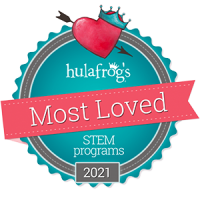The Power of S.T.E.A.M.: Cultivating Creative and Innovative Thinkers
In recent years, there has been a growing emphasis on integrating the arts into STEM education, giving rise to the powerful approach known as S.T.E.A.M. (Science, Technology, Engineering, Arts, and Mathematics). This interdisciplinary framework recognizes the importance of creativity, critical thinking, and innovation in today’s rapidly evolving world. By combining STEM disciplines with the arts, S.T.E.A.M. education nurtures well-rounded individuals who possess the skills and mindset needed to tackle complex challenges and drive societal progress. Let’s delve into the power of S.T.E.A.M. and how it cultivates creative and innovative thinkers.
- Fostering Creativity: S.T.E.A.M. education sparks creativity by infusing artistic elements into scientific and technical pursuits. The arts inspire students to think outside the box, encouraging imaginative problem-solving and innovative approaches to challenges. By integrating art and design into STEM projects, students develop a deep appreciation for aesthetics and learn to communicate their ideas visually. This creative thinking nurtures a mindset of curiosity and exploration, paving the way for unique and inventive solutions.
- Encouraging Collaboration and Communication: S.T.E.A.M. education promotes collaboration and communication skills, essential for success in the modern world. Through interdisciplinary projects and group work, students learn to work effectively in teams, blending their diverse perspectives and expertise. The arts provide a common language that transcends traditional boundaries, enabling students to communicate complex ideas and concepts in accessible and engaging ways. This collaboration fosters a sense of community and prepares students for future careers that require teamwork and effective communication.
- Cultivating Critical Thinking and Problem-Solving Skills: S.T.E.A.M. education cultivates critical thinking and problem-solving skills by integrating analytical and artistic thinking processes. Students learn to approach challenges from multiple angles, combining scientific inquiry with creative problem-solving techniques. They develop the ability to analyze data, think critically, and apply knowledge to real-world situations. This holistic approach equips students with the tools to tackle complex problems, adapt to new situations, and find innovative solutions.
- Nurturing Innovation and Entrepreneurship: S.T.E.A.M. education nurtures innovation and entrepreneurship by fostering an entrepreneurial mindset and a culture of innovation. Students are encouraged to take risks, embrace failure as a learning opportunity, and think entrepreneurially. The integration of arts and design encourages students to explore new ideas, experiment, and iterate on their work. This mindset prepares students to be adaptable, innovative, and ready to tackle the challenges and opportunities of a rapidly changing world.
- Inspiring a Lifelong Love for Learning: S.T.E.A.M. education inspires a lifelong love for learning by making education engaging, relevant, and meaningful. By blending artistic expression with scientific inquiry, students develop a passion for learning and a curiosity about the world around them. S.T.E.A.M. encourages students to explore their interests, follow their passions, and pursue their own unique paths. It fosters a love for learning that extends beyond the classroom and prepares students for a lifetime of intellectual growth and discovery.
Conclusion: The power of S.T.E.A.M. lies in its ability to cultivate creative and innovative thinkers who are equipped to tackle complex challenges and make a positive impact in the world. By integrating the arts with science, technology, engineering, and mathematics, S.T.E.A.M. education nurtures well-rounded individuals with the skills, mindset, and creativity needed for success in the 21st century. Let us embrace the power of S.T.E.A.M. and inspire the next generation of creative problem solvers, innovators, and changemakers. Together, we can shape a future where imagination and intellect combine to drive positive societal change.

Commencing your journey with us is effortless. By scheduling a meeting with our team, you can leave the rest to us. Together, let's join forces to bolster your child's academic accomplishments and work towards their educational success!

457 Nathan Dean Blvd. St. 105 #309 Dallas, GA 30132
info@achievesuccesstutoring.com
(833) 278-8867
© 2025. Achieve Success Tutoring. | Connect Branding and Marketing
